Non-Native Species in the Great Lakes
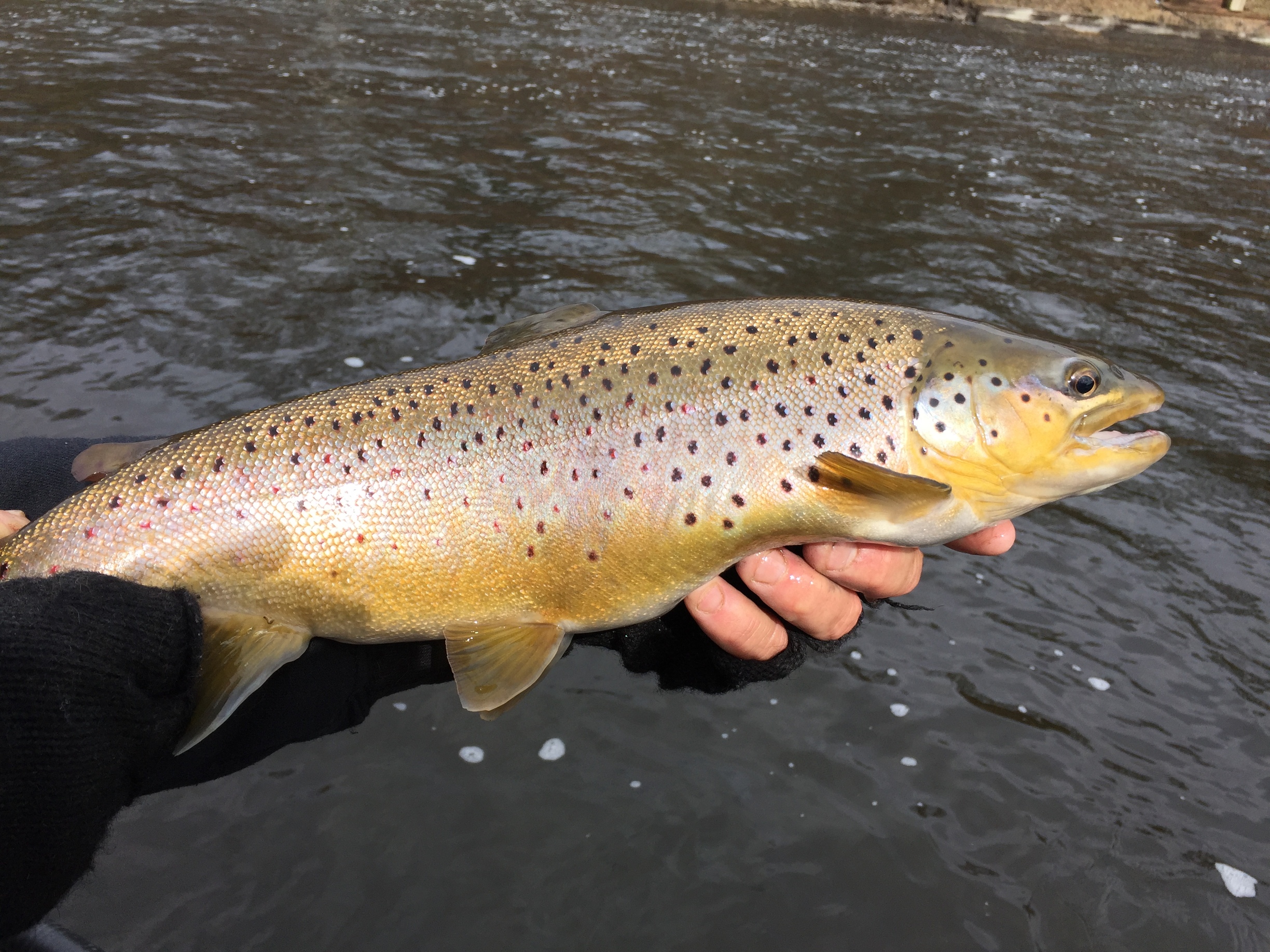
* This page contains affiliate links. The Great Lakes Fisherman may earn a commission on items purchased through these links. For more on this, please click here.
The Great Lakes contains dozens of non-native species of fish. Some of these fish were introduced accidentally and some, by design. While you probably know about some of these, such as the sea lamprey or the round goby, you may be surprised by some of these fish that you thought have always been here. Here, we will examine some common species you didn’t know weren’t native to the Great Lakes.
Alewives
Alewives are a forage species of fish from the ocean. Like many non-native species, they are believed to have arrived in the Great Lakes via the dumping of ship ballast water in the 1860s. Once they were here, they competed for food with native species. To help control their populations, salmon were introduced.
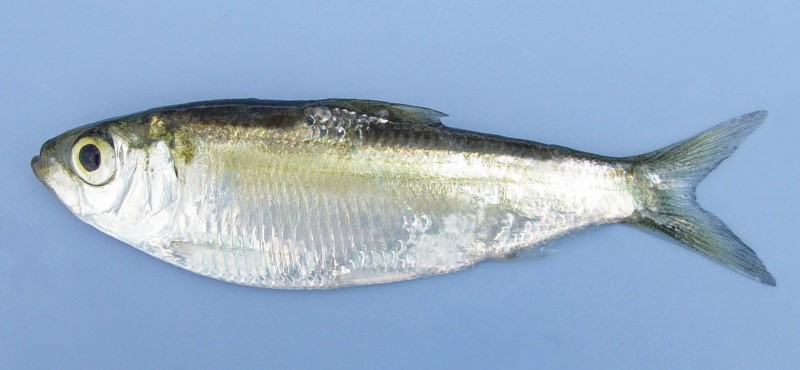
Salmon
There are 4 species of Pacific salmon (chinook, coho, pink & kokanee ) that have been stocked in the great lakes since the 1870’s. Although there were previous attempts to introduce salmon to the lakes, it wasn’t until the 1960’s, when alewife populations had exploded, that the salmon populations established themselves. While 3 of these species persist to this day, the kokanee (sockeye) salmon was not able to sustain itself and is believed to have died out shortly following its introduction.
In addition to the 4 Pacific species of salmon, there is one additional species of salmon, the Atlantic salmon, that is found in the Lakes. However, this species has a slightly different story. The Atlantic salmon was native to Lake Ontario until the late 1800’s when overfishing, pollution and the destruction of spawning habitat is believed to have resulted in the demise of the population. Similar to the introduction of the Pacific salmons, the Atlantic salmon, having failed introduction several times prior, finally became established in the 1970’s due to the high alewife populations.
Common Carp
Common Carp are believed to have been brought to the region in the 1800s because of their popularity as a food source in Europe. According to the Michigan DNR, the carp are not considered by authorities to be “invasive” as they don’t cause harm to the state’s economy or the environment. The common carp is a species of the minnow family.
Buffalo
Although they look similar to the carp, buffalo come from a completely different family. These fish are the largest members of the sucker family. There are 3 species of buffalo (out of 5) that are in the Great Lakes and all are non-native. Two of them, the smallmouth buffalo and the bigmouth buffalo, are believed to have been introduced in the 1960’s while the black buffalo is believed to have been introduced in the 1980’s. The process of their introduction is not yet understood.
Flathead Catfish
Though the source of their introduction is still being investigated, flathead catfish are known to have been in the Lakes since the 1920’s when populations were discovered in the Kalamazoo and Grand Rivers, tributaries of Lake Michigan. The range of these fish is reportedly still expanding into the northern reaches of Lakes Michigan and Huron. To date, their impacts to other species appears to be minimal to non-existent.
Round Goby
The round goby is one of the more recent species to have been introduced to the Great Lakes, having only established themselves here in the last 30 years. The round goby is another species that arrived through ship ballast water dumping. While the goby has its downsides, it has provided a benefit to the world-class smallmouth fishery that the Great Lakes offer. For more on the relationship between the round goby and smallmouth bass, check out this article.
Rainbow Smelt
Although smelt are a popular gamefish and table fare, many people don’t realize that these fish are not native to the Great Lakes. Rainbow smelt were planted in Crystal Lake in northwest Michigan in 1912. The fish made their way to Lake Michigan via the Betsie River and quickly established themselves in all of the Great Lakes.
Populations of these species have declined sharply in recent decades and researchers aren’t entirely sure why. It is largely believed that the introduction of quagga and zebra mussels into the food chain is a contributor, but the exact mechanisms of their impact are unknown.
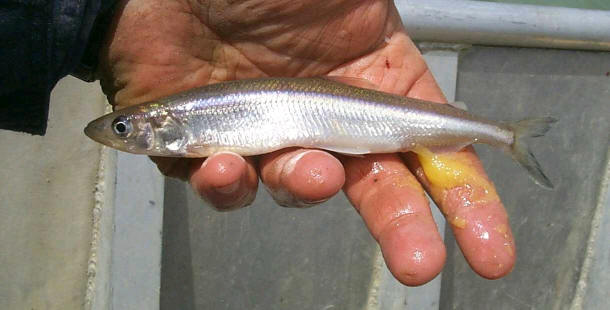
Grass Carp
The grass carp is 1 of 4 species of invasive (Asian) carp that are posing one of the most significant threats to the Great Lakes in modern history. To date, the grass carp is the only species to have been found in the Great Lakes and measures are being taken to reduce, and hopefully eliminate, its impact. For more on the latest efforts to prevent and control impacts by Asian carp, check out this article.
Sea Lamprey
One of the more problematic species to enter the fold is the sea lamprey. Previously
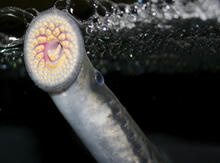
stopped by Niagara falls, the Welland and Erie canals allowed these blood-sucking parasites to enter the remaining Great Lakes upon their completion. These fish have had devastating impacts on other Great Lakes species and have required millions of dollars in annual funding to control their populations.
White Perch
The white perch is another species that took advantage of man-made canals to progress into waters further inland. Being native to the North Atlantic region of North America, these fish can now be found throughout the Great Lakes thanks to the construction of the Erie and Welland canals which allowed their passage deeper into the lake system.
Brown Trout
Brown trout were introduced to the region via stocking programs. Not only are brown trout not native to the Great Lakes, they are not even native to the United States. Brown trout were brought to the U.S. from Germany in the mid-1800’s. Like salmon, early attempts to stock brown trout in Lake Michigan were unsuccessful and it wasn’t until the
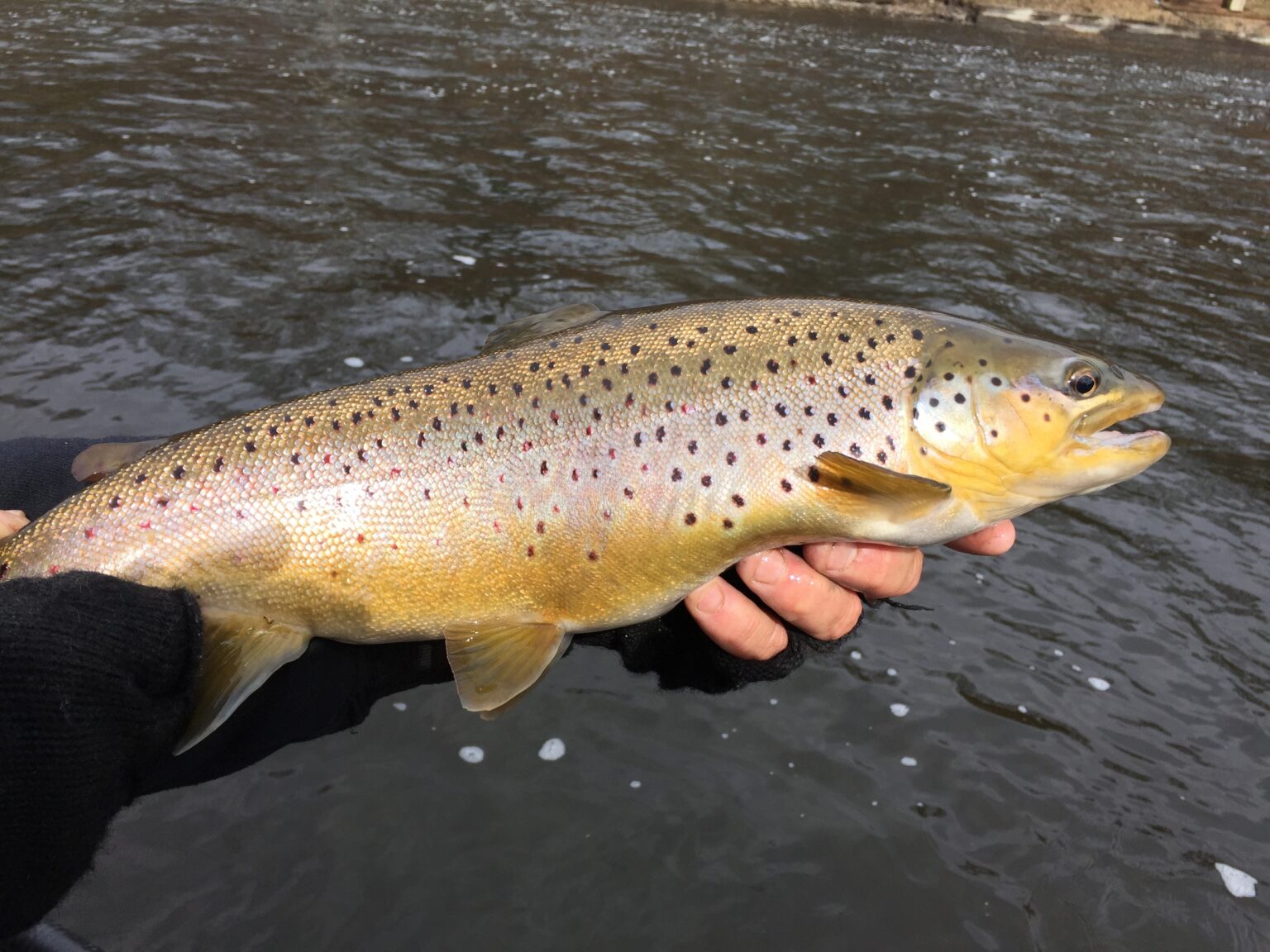
1960’s that the fish took hold as a result of newly refreshed stocking programs.
Rainbow Trout & Steelhead
Rainbow trout and steelhead were also introduced to the Lakes via a stocking program in the late 1800s. These fish had more success than did the programs for brown trout. Rainbow trout are inland fish that live and spawn in the same range. The anadromous (lake/ocean migrating) form of the fish known as the steelhead, live much of their lives swimming in the open lakes but migrate to their native streams and creeks for spawning. Steelhead are now one of the most popular fish to pursue in the region, offering folks in the eastern half of the country a taste of what the west coast has had all along.
Redear Sunfish
Relatives of the bluegill known as redear sunfish were believed to have been introduced to the region around 1928 when they were stocked in some Indiana waters. These fish are known as “shellcrackers” in their native region of the southeast, due to their ability to crack mollusk shells. They have proven
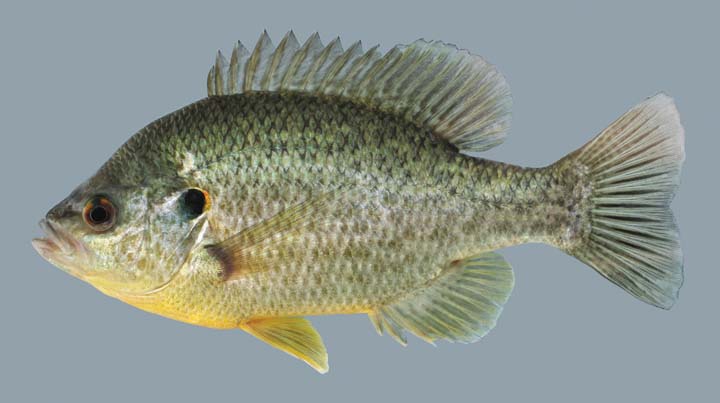
to be a popular gamefish both in the summer and through the ice and tend to inhabit similar waters as their other sunfish cousins.
